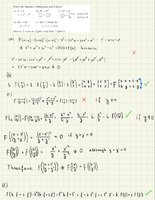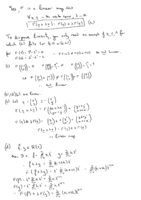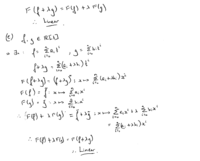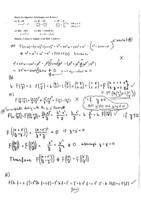Frankenstein143
New member
- Joined
- May 17, 2021
- Messages
- 22
The task is to decide whether (a),(b),(c),(d),(e) are linear maps or not.
The definition of linear map ist:
L1 F (v + w) = F (v) + F (w),
L2 F (k*v) = k* F (v)
With the definitions I tried to solve (a),(b),(c),(d),(e). Can you check please whether it is correct or not?
Unfortunately, I could not solve (e). Can you help me with that?
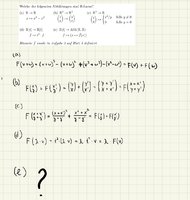
The definition of linear map ist:
L1 F (v + w) = F (v) + F (w),
L2 F (k*v) = k* F (v)
With the definitions I tried to solve (a),(b),(c),(d),(e). Can you check please whether it is correct or not?
Unfortunately, I could not solve (e). Can you help me with that?


